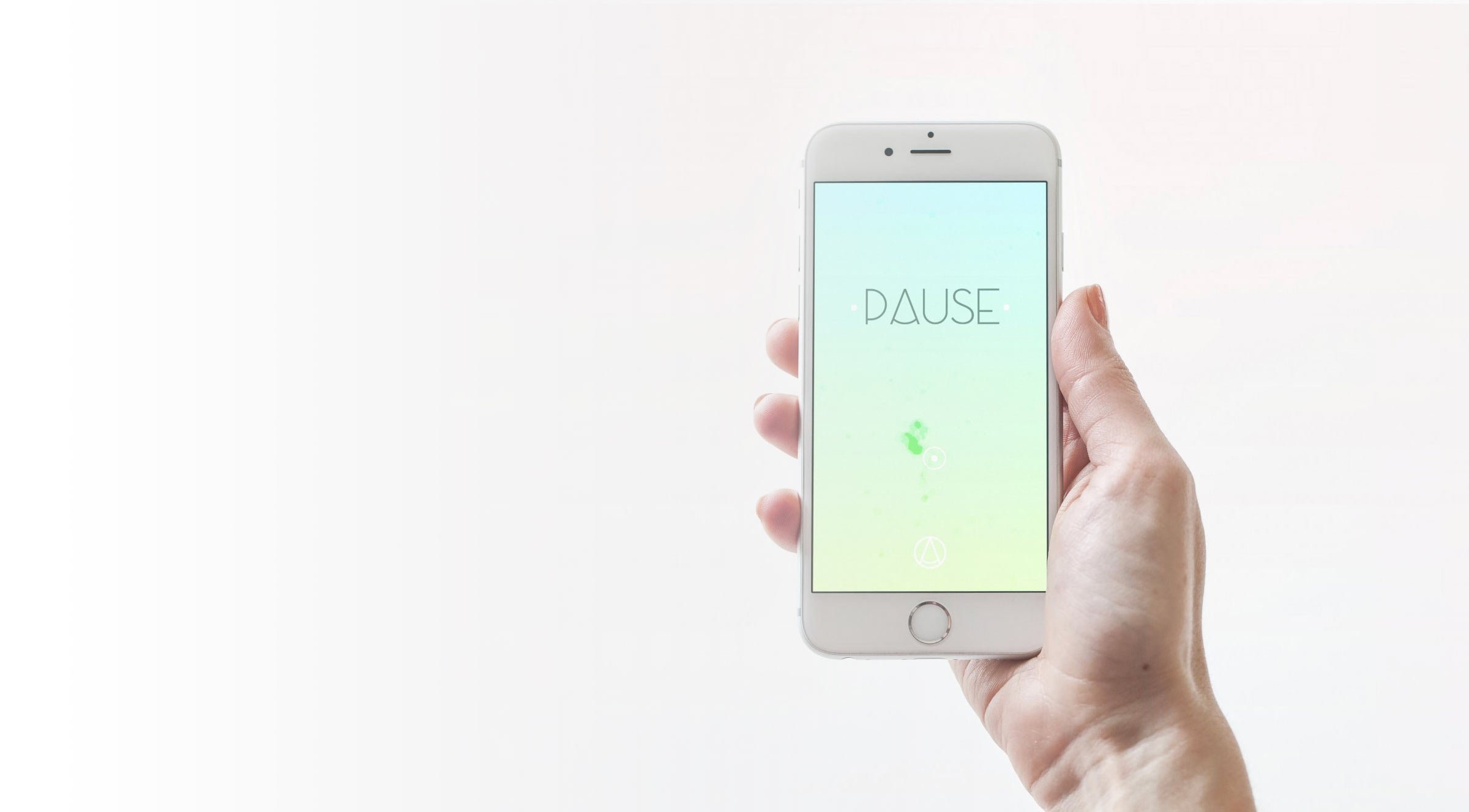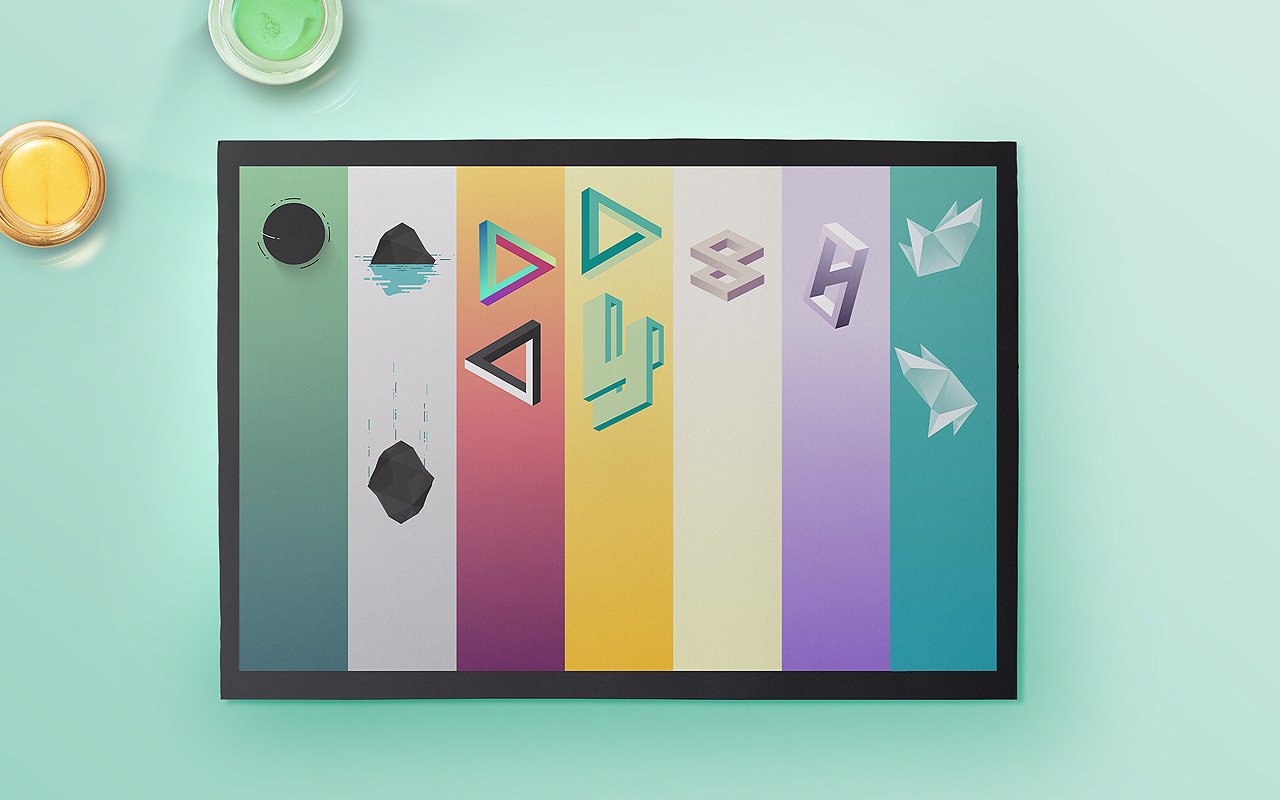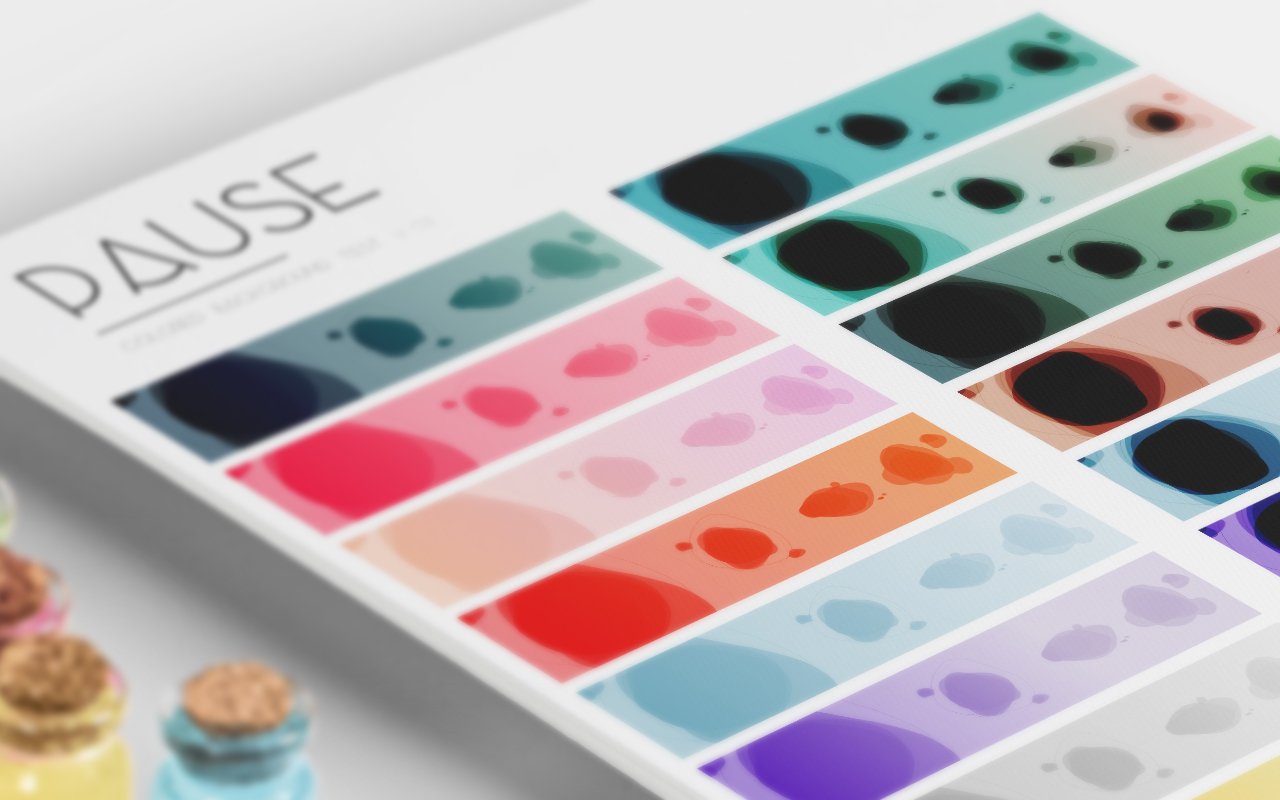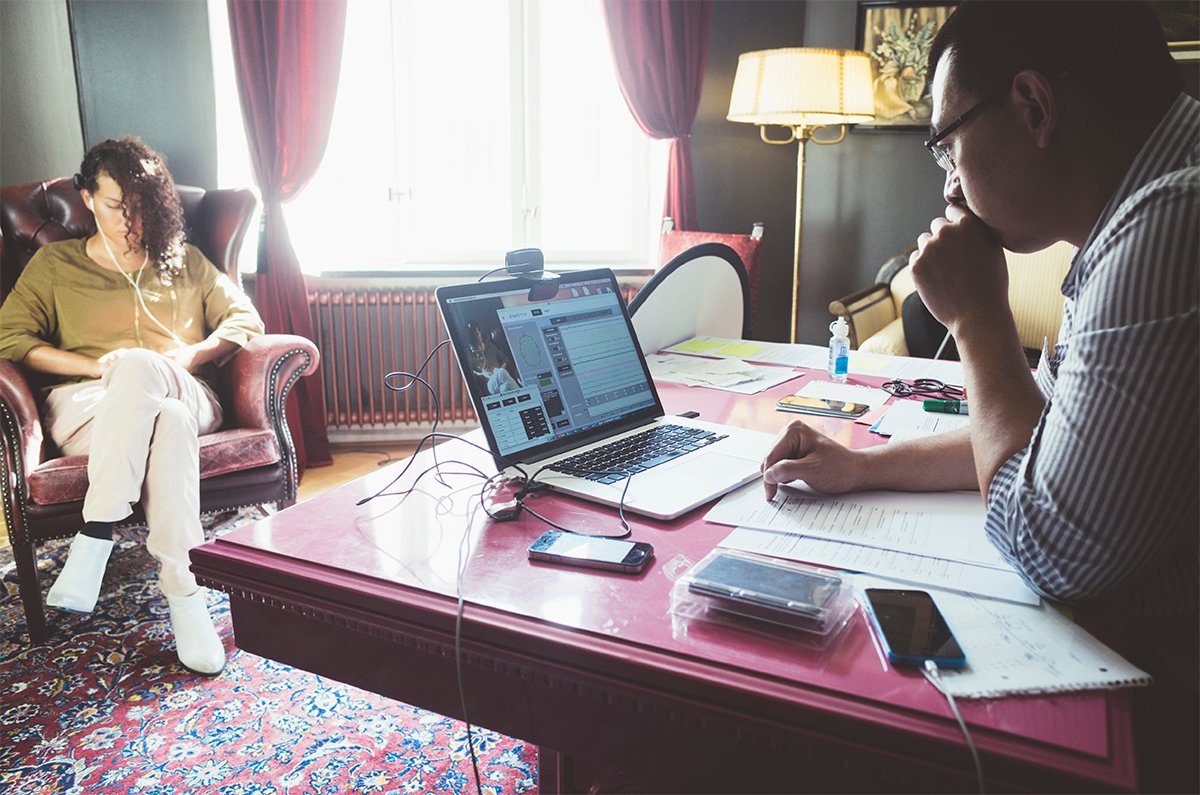Pause
A totally new mobile relaxation and meditation experience for a calmer state of mind

PAUSE is a collaboration between ustwo and Danish mental health company PauseAble. Download PAUSE for iOS, or for Android today.
Nowadays, it can sometimes feel as though stress and anxiety wreak havoc in our lives. Like many others, PauseAble founder Peng Cheng struggled with stress and anxiety, and it got to the point where it was affecting both his life and his work.
Deciding to take matters into his own hands, quite literally, he began practicing ancient Tai Chi and mindfulness to change his destructive patterns. With a background in interaction design, he saw an opportunity to combining these techniques with modern technology. Peng reached out to ustwo, and together we began to explore creating an engaging user experience for his research – a product that could actually help people to relax and reduce stress.
Watch the video here
Capturing a philosophy
Setting up a hybrid team with UX and visual design and Unity 3D development, we were inspired and intrigued by the simplicity of the initial product idea and prototype, as well as the challenge – capturing the essence of a whole philosophy into a single digital experience. We needed to create something that just about anyone would be able to pick up and experience the value of themselves, with little or no instruction.
We allowed quite fluid role definitions to take full advantage of the hybrid skill-set in the team, and having the client on site also helped a lot. Working on PAUSE meant constantly trying things out through open exploration, rapid prototyping and rigorous testing. Using Unity, we were able to constantly test our designs – making live changes and prototyping our different approaches in real-time.

Perfecting the experience
For the service definition phase, it came down to defining what could bring the philosophy to life – thinking about how to create an experience that continuously draws the attention of the user, without seeking to occupy it fully. After some reflection, and a quick round of user testing, we realised we needed something beautiful and fascinating that would trigger the interaction, but in the end not needed to be seen on the screen so the user could focus on the relaxing effect of their own repetitive movements and the audio.
PAUSE's design went through dozens of iterations that embraced mindfulness and meditative philosophies, from sinking in the ocean to experimenting with different shapes such as an iceberg, crystals or Escher's impossible shapes – a la the soothing experience of our mobile game Monument Valley. Eventually, we found the perfect combination in the slowly growing shape experience you can download today.
The sound in PAUSE also went through several iterations. The first draft of the final version was not made until the graphics and motions were in place. Until then, we felt it was impossible to create an audio accompaniment that truly fit the experience.
We tested adding different natural sounds during the user testing sessions and ended up using waves and birds. One of our testers came up with the brilliant idea to have different sounds depending on where your fingers were on the screen. The first version contained small subtle rhythms, but we realised pretty early on that a sweeping sound around one chord would work better. A repeating, soothing loop that lets you drift away.

Validating our vision
Validating the scientific and physiological benefits of using PAUSE was very important. Venturing into the unknown and creating something never seen before, it became very important to stay critical while interpreting different data types. We wanted to make sure our simple and engaging solution actually worked – looking at both qualitative and quantitative data throughout the different phases of use.
The initial tests were conducted on participants wearing a Muse brain sensor headband, trying out different concepts for 10 minutes and following up with interviews. Testing the final concept, the brain signals clearly showed the participants' minds changed from an active state to a calmer state when using the app. They also sustained this calmness throughout the session.
To further evaluate PAUSE's ability to calm the active mind, we set out to conduct a scientific study using an Emotiv wireless headset to measure EEG-signals. To validate the data from these sessions, we collaborated with Dr. Chi Thanh Vi, Research Fellow in Multisensory Experiences at the University of Sussex. Chi Thanh Vi is an expert in using brain sensing methods to understand the neural basis of different user states when using interactive products. With his analysis, we could interpret the data and show that PAUSE helps to produce a calmer state of mind and a lower mental workload.

Relaxation on the go
With the constant change in technology, it is easy to blame our devices for causing stress or disturbing our attention. A natural reaction to this is to view them as a dangerous force that we must keep a distance from or set clear boundaries. Creating PAUSE, our goal was to turn this assumption on it's head. Using that same technology, we've instead created a simple, beautiful, intuitive app that helps users relax and embrace mindfulness in seconds, no matter where they are.
Having worked on this project has been incredibly rewarding. It's great to see that our capabilities of building and designing digital products ranges over a broad variety of different sectors. With PAUSE, people can experience the benefits of Tai Chi and mindfulness in a few minutes rather than months or years of dedicated training. We're very proud to have released a product that has, and will hopefully continue to make, a positive difference in people's lives.
During launch week in October 2015, PAUSE saw more than 60,000 downloads and a #1 position for paid apps in 18 markets in the App Store. A year and half later, it now has over 350,000 downloads and a community of committed users.
PAUSE continues to generate interest across design, health, wellness, lifestyle and tech press. Including being recognised as a finalist in the health category of the 2016 FastCo Innovation By Design awards. Here is a further selection of press: